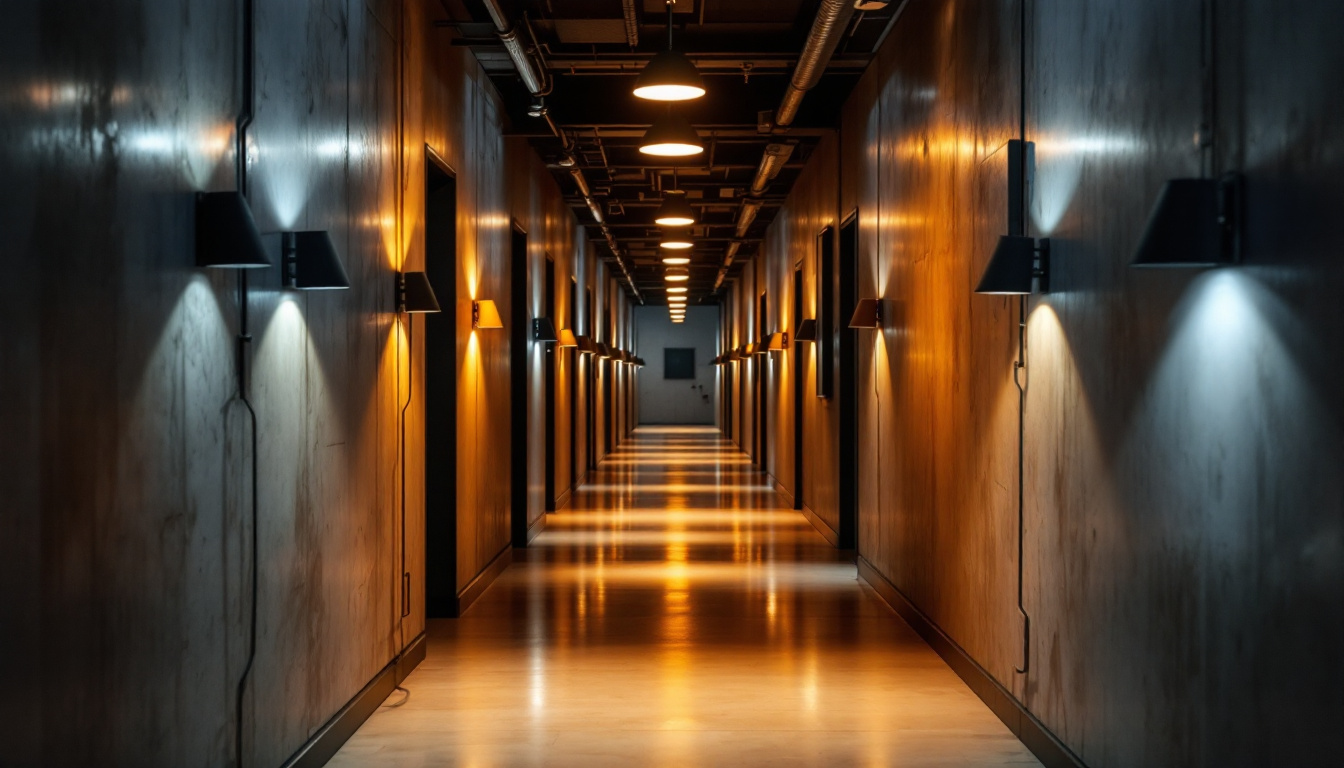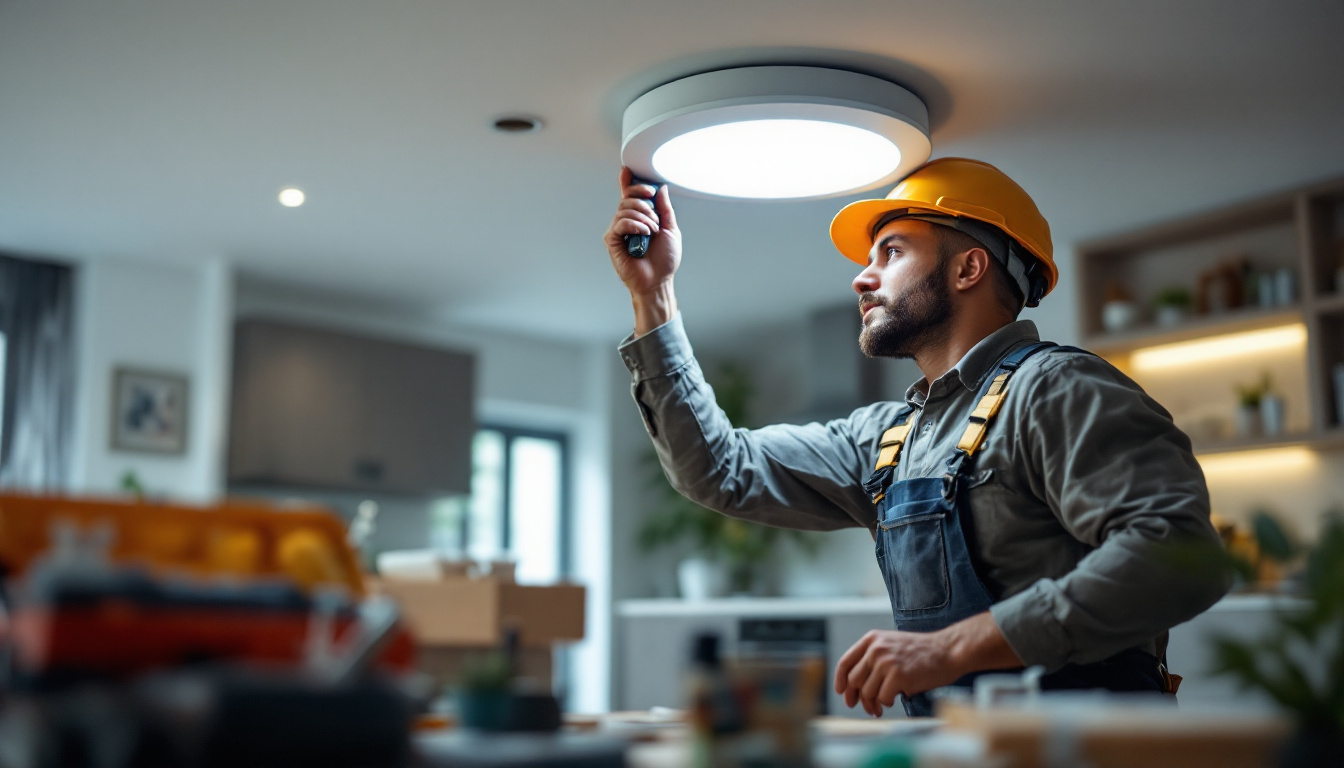

In the world of kitchen design, lighting plays a pivotal role in both functionality and aesthetics. For lighting contractors, understanding the nuances of recessed lighting can lead to enhanced project efficiency and client satisfaction. This article delves into the benefits of recessed lighting in kitchens, exploring how it can streamline projects and improve overall lighting quality.
Recessed lighting, often referred to as can lights or pot lights, is a type of lighting fixture that is installed into a hollow opening in the ceiling. This design allows the light to shine downward, creating a clean and unobtrusive look. The versatility and effectiveness of recessed lighting make it an ideal choice for various kitchen applications, from providing general illumination to accentuating specific design features.
There are several types of recessed lighting fixtures available, each designed to meet specific needs. The most common types include:
The advantages of incorporating recessed lighting into kitchen designs are numerous. Not only does it provide ample illumination, but it also enhances the overall ambiance of the space.
One significant benefit is the ability to create layered lighting. By combining recessed lights with other types of lighting, such as pendant lights or under-cabinet lighting, contractors can achieve a well-lit kitchen that is both functional and inviting. This layering effect can also help to define different areas within the kitchen, such as the cooking zone, prep area, and dining space, ensuring that each section is appropriately illuminated for its specific use.
Another key advantage of recessed lighting is its ability to save space and reduce visual clutter. Unlike traditional light fixtures that hang down from the ceiling, recessed lights are flush with the ceiling, making them an excellent choice for kitchens with lower ceilings or open floor plans. This unobtrusive design not only maximizes headroom but also allows for a more streamlined aesthetic, making the kitchen appear larger and more cohesive. Additionally, the use of dimmable recessed lighting can further enhance the kitchen’s functionality, allowing homeowners to adjust the brightness according to the time of day or the mood they wish to create.
For lighting contractors, project efficiency is essential for maintaining profitability and ensuring client satisfaction. Recessed lighting can significantly enhance this efficiency in various ways.
The installation of recessed lighting can be more straightforward than traditional fixtures. Since they are installed flush with the ceiling, they require less space and can be positioned in a way that minimizes the need for extensive electrical work. This can lead to faster installation times and reduced labor costs.
Moreover, many recessed lighting fixtures are designed for easy installation, with features such as quick-connect wiring and adjustable mounting brackets. This not only speeds up the process but also reduces the likelihood of installation errors, further enhancing project efficiency. Additionally, the compact nature of recessed lights allows for greater flexibility in design, enabling contractors to create a more aesthetically pleasing layout without the bulkiness of traditional fixtures. This adaptability can be particularly beneficial in residential renovations where space is often limited.
Recessed lighting can also contribute to energy efficiency, which is an increasingly important factor for homeowners. By utilizing LED recessed lights, contractors can provide clients with a lighting solution that consumes significantly less energy compared to traditional incandescent bulbs.
These energy-efficient options not only reduce electricity bills but also have a longer lifespan, resulting in fewer replacements and maintenance costs. This aspect can be a strong selling point for contractors looking to appeal to environmentally conscious clients. Furthermore, many modern LED recessed lights come with smart technology options, allowing homeowners to control their lighting remotely or set schedules for automatic adjustments. This level of convenience not only enhances the user experience but also promotes energy conservation, as lights can be programmed to turn off when not in use, further driving down costs and supporting sustainable living practices.
When planning a kitchen lighting project, several design considerations must be taken into account to maximize the effectiveness of recessed lighting.
The placement and spacing of recessed lights are critical to achieving optimal illumination. A common guideline is to space the lights approximately 4 to 6 feet apart, depending on the height of the ceiling and the wattage of the bulbs being used.
Additionally, it is essential to consider the areas that require more light, such as workspaces or islands. By strategically positioning the fixtures, contractors can ensure that these areas are well-lit while avoiding harsh shadows or overly bright spots. For instance, placing lights directly above a kitchen island can create an inviting atmosphere for meal preparation and social gatherings. Furthermore, incorporating dimmer switches can enhance flexibility, allowing homeowners to adjust the brightness according to the time of day or the specific activity taking place.
The trim and finish of recessed lighting fixtures can significantly impact the overall aesthetic of the kitchen. Options range from baffle trims, which reduce glare, to adjustable trims that allow for directional lighting.
Contractors should also consider the finish of the trim, as this can complement the kitchen’s design theme. For instance, a sleek chrome finish may suit a modern kitchen, while a matte white finish can blend seamlessly with a traditional decor. Beyond aesthetics, the choice of trim can also affect functionality; for example, trims with a higher reflectance can enhance brightness in darker areas, making them ideal for spaces that lack natural light. Additionally, exploring various styles, such as vintage or industrial, can further personalize the lighting design, ensuring it aligns with the homeowner’s unique taste and the overall ambiance of the kitchen.
Dimming capabilities are another aspect that can enhance the functionality of recessed lighting in kitchens. By integrating dimmer switches, contractors can provide clients with the flexibility to adjust the lighting according to their needs. This adaptability is particularly beneficial in multi-functional spaces like kitchens, where tasks can vary from meal prep to casual dining. With a simple adjustment, the lighting can transition from bright and focused to soft and relaxing, catering to the specific requirements of each moment.
In addition to practical lighting for cooking and food preparation, dimmable recessed lights allow homeowners to create a warm and inviting atmosphere for entertaining or family gatherings. This versatility can significantly increase the appeal of a kitchen, making it a more enjoyable space for social interactions. Imagine hosting a dinner party where the lights can be dimmed to create an intimate setting, or adjusting the brightness for a lively breakfast with the family. The ability to control the lighting enhances the overall experience, making the kitchen not just a place for cooking, but a central hub for connection and enjoyment.
Incorporating dimming options not only enhances the ambiance but also contributes to energy savings. By reducing the brightness when full illumination is not necessary, homeowners can further decrease their energy consumption, aligning with sustainable living practices. This is particularly important in today’s eco-conscious world, where every small change can contribute to a larger impact on the environment. Additionally, many modern dimmer switches are designed to work seamlessly with LED lighting, which already offers energy-efficient benefits. By pairing dimmable LEDs with smart technology, homeowners can also schedule lighting to match their daily routines, optimizing energy use even further while enjoying the convenience of automation.
While recessed lighting offers numerous benefits, there are also challenges that lighting contractors may encounter during installation and design. Understanding these challenges and how to address them can lead to smoother project execution.
One common concern with recessed lighting is heat buildup, particularly with traditional incandescent bulbs. To mitigate this issue, it is advisable to use LED bulbs that generate significantly less heat. Additionally, ensuring proper insulation and ventilation around the fixtures can prevent overheating and prolong the lifespan of the lighting system.
The height of the ceiling can also impact the effectiveness of recessed lighting. In kitchens with high ceilings, it may be necessary to increase the number of fixtures or opt for higher wattage bulbs to ensure adequate illumination. Conversely, in kitchens with lower ceilings, careful consideration must be given to avoid creating a cramped feeling.
Recessed lighting is a powerful tool for lighting contractors looking to enhance project efficiency while delivering high-quality results for clients. By understanding the various types of fixtures, design considerations, and potential challenges, contractors can create well-lit kitchens that are both functional and aesthetically pleasing.
As the demand for energy-efficient and stylish lighting solutions continues to grow, recessed lighting stands out as a versatile option that meets the needs of modern homeowners. By incorporating these fixtures into kitchen designs, contractors can not only improve their project efficiency but also elevate the overall experience for their clients.
In summary, recessed lighting is more than just a design choice; it is an essential component of effective kitchen lighting that can lead to increased satisfaction and efficiency in every project.
Ready to take your kitchen lighting projects to the next level? At LumenWholesale, we provide you with the high-quality, spec-grade recessed lighting you need to enhance project efficiency and delight your clients. With unbeatable wholesale prices and a commitment to superior products, we ensure you get the best value without the middleman markups. Our extensive selection is designed to meet the highest industry standards, offering reliable and high-performance lighting solutions for every design. Plus, with free shipping on bulk orders, you can stock up on premium lighting effortlessly and affordably. Elevate your lighting game and experience the perfect blend of quality, affordability, and convenience. Visit us now at Wholesale Lighting at the Best Value and transform your lighting approach today.

Explore the advantages and drawbacks of strip light attachments for lighting contractors.

Discover the must-have tools for lighting contractors to transform dim and light hallways into inviting spaces.

Discover the essential insights and considerations for lighting contractors when working with 6-inch recessed light cans.

Discover essential tips and insights for lighting contractors in our comprehensive guide to navigating the lightbulb store.
Get notified when NEW deals are released.
Optimize your budget with wholesale discounts.
Only top-quality, specification-grade lighting products.
No additional costs at checkout - what you see is what you pay.
We understand the unique needs of contractors.